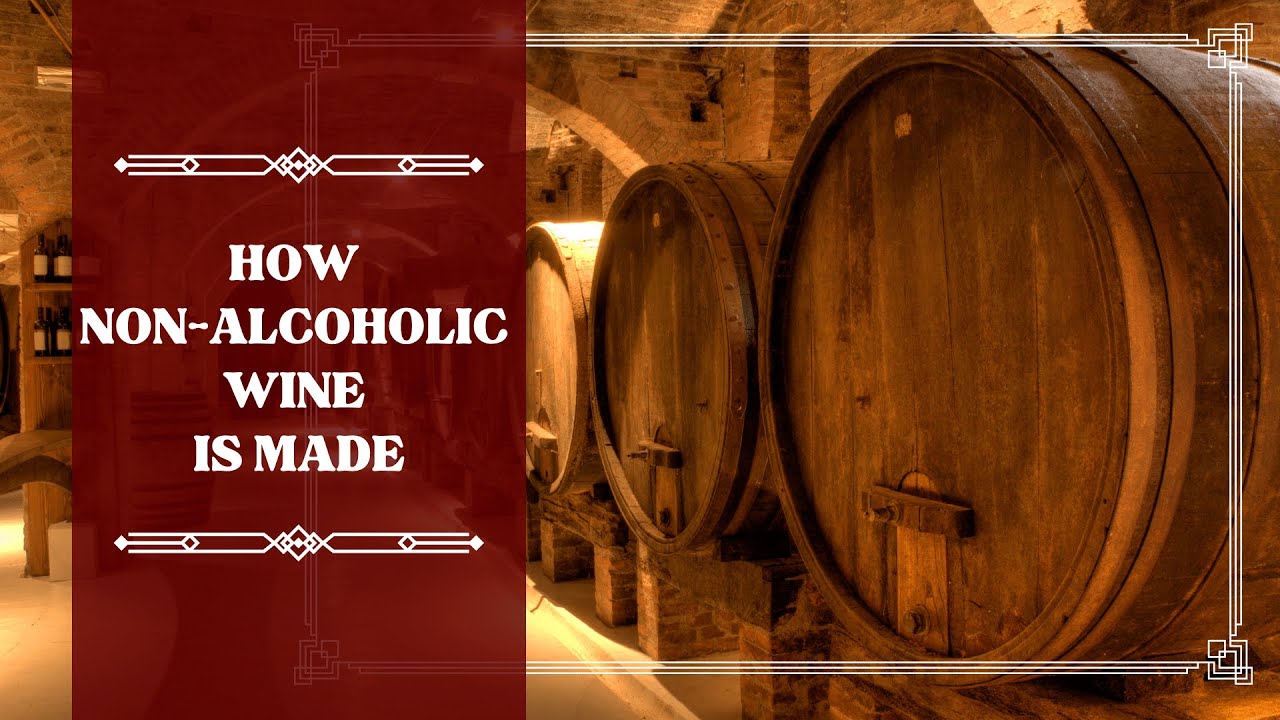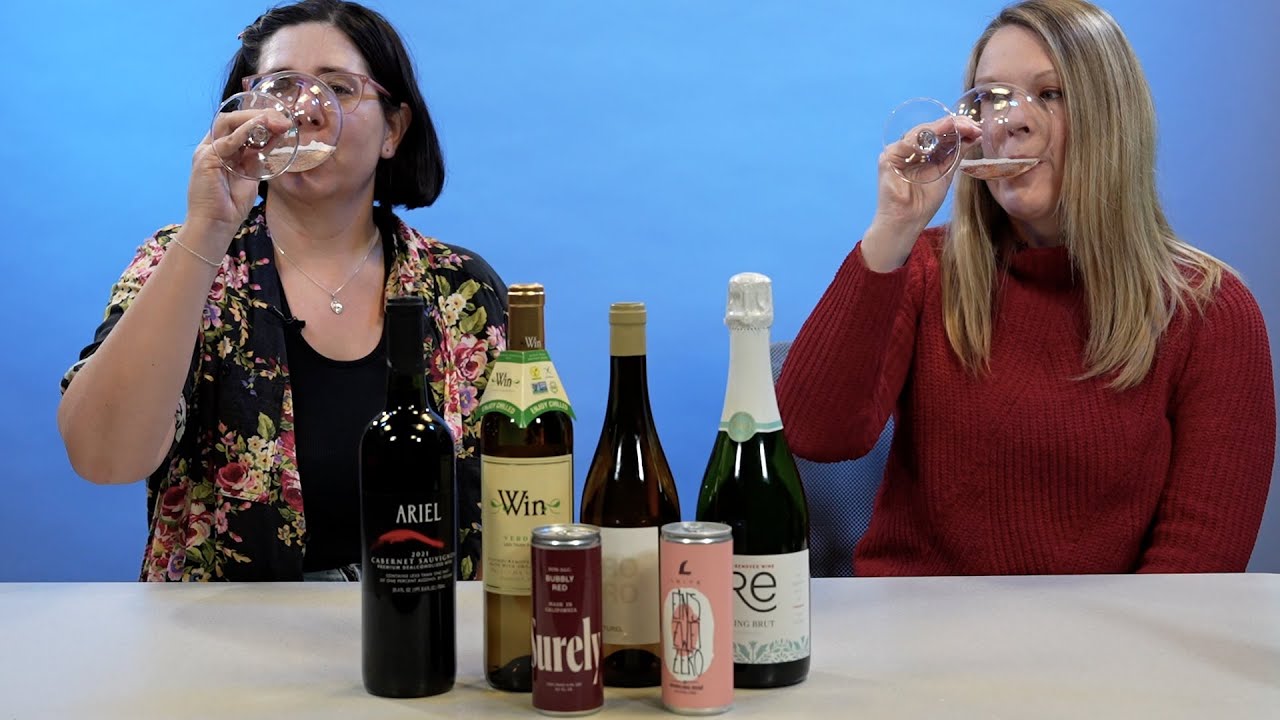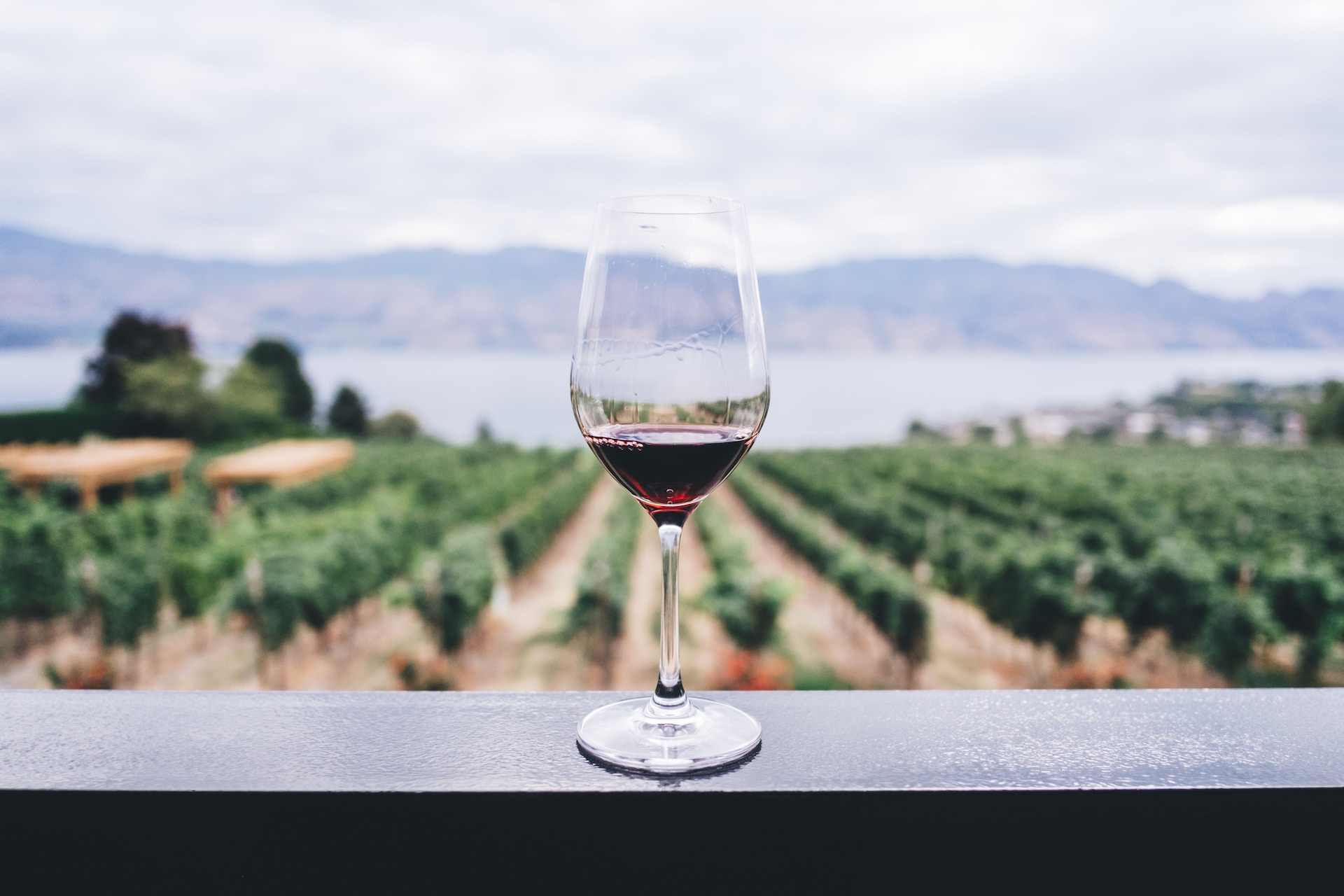Wine Dealcoholization - Enjoying Wine Without The Alcohol
When it comes to wine dealcoholization, it’s both a process and a story of craftsmanship and innovation. It explores the boundless possibilities of enjoying the pleasures of wine in a different light. The low alcohol level of dealcoholized wine makes them appealing for many people, including pregnant women.
Author:Suleman ShahReviewer:Han JuMay 31, 20238.7K Shares379.3K Views

Welcome to the world of wine dealcoholization, where flavors dance on the palate and aromas weave tales of tradition and indulgence.
Wine has long been celebrated as a timeless companion, enhancing moments of joy and adding a touch of sophistication to our gatherings.
However, in recent years, a new trend has emerged that caters to those seeking a different kind of wine experience - one that allows them to savor the captivating nuances of wine without the presence of alcohol.
The process of dealcoholization has revolutionized the world of winemaking.
It has opened a box of possibilities for those who wish to enjoy the complex flavors and characteristics of wine while abstaining from alcohol.
Wine dealcoholization offers a unique opportunity to explore the artistry and craftsmanship of winemakers, leading to the creation of exceptional beverages that cater to diverse lifestyles and preferences.

How Non-alcoholic (0.0%) Halal Wine is Made
What Is Wine Dealcoholization?
The process of reducing or removing the alcohol content from winewhile retaining its flavor and aroma is called wine dealcoholization.
This process is carried out for various reasons, such as:
- catering to individuals who prefer low-alcohol or alcohol-free beverages
- complying with regulations in certain markets
- accommodating individuals with specific dietary restrictions or healthconcerns
Dealcoholization techniques vary depending on the desired outcome and the characteristics of the wine.
Below are some of the major aspects involved in the dealcoholization of wine.
a. Purpose
The primary goal of dealcoholization is to reduce the alcohol content in wine while preserving its organoleptic properties.
Organoleptic properties refer to the characteristics of a substance that can be perceived by our senses (e.g., sight, taste, smell, touch).
Wine dealcoholization affects the organoleptic properties of wine, including:
- flavor
- aroma
- mouthfeel
The aim is to create a product that closely resembles the original wine but with reduced or eliminated alcohol.
b. Alcohol Removal
Various methods are employed to remove alcohol from wine.
These techniques typically involve physical or chemical processes that separate alcohol from the other components of the wine.
Each technique has its own:
- advantages
- disadvantages
- effects on the final product
c. Flavor and Aroma Preservation
One of the challenges in wine dealcoholization is to maintain its sensory characteristics.
Removing alcohol can potentially alter the flavor profile because the presence of alcohol in wine contributes to its:
- aroma
- body
- overall balance
When we refer to the “body” of a wine, we are describing its overall mouthfeel and texture.
To address this, techniques are employed to minimize the loss of volatile aromatic compounds and to retain the desired flavors.
For instance, certain dealcoholization methods may involve processing the wine under reduced temperatures or employing gentle extraction processes to help retain the aromatic compounds.
d. Quality Considerations
Wine dealcoholization can have an impact on the overall quality of the wine.
While the intention is to maintain the original wine’s character, some changes in flavor, texture, or mouthfeel may occur during the process.
Winemakers strive to minimize these effects and create a product that is as close to the original wine as possible.
Quality control measures (e.g., sensory evaluation and analytical testing) are often employed to ensure the final product meets the desired standards.
e. Consumer Acceptance
The demand for low-alcohol or alcohol-free beverages has increased in recent years, driven by a variety of factors, including:
- health consciousness
- personal preferences
- changing social trends
Wine dealcoholization is a way to cater to this consumer demand.
However, consumer acceptance can vary depending on factors, such as:
- the quality of the dealcoholized wine
- its similarity to the original wine
- cultural perceptions surrounding non-alcoholic beverages
Overall, the dealcoholization of wine aims to create a product that satisfies the demand for low-alcohol or alcohol-free alternatives while maintaining the sensory qualities of wine.
Dealcoholization Wine Process
Wine dealcoholization involves a combination of scientific and technological methods to achieve a balance between reducing alcohol content and preserving the sensory characteristics of wine.
Several techniques are used in the production of dealcoholized wine. Below are some of the commonly employed methods:
Vacuum Distillation
In this process, the wine is placed in a vacuum chamber, and the pressure is reduced.
Lowering the pressure lowers the boiling point of alcohol, allowing it to evaporate at a lower temperature than the other components of wine.
The evaporated alcohol is then condensed and collected, while the remaining liquid retains the wine’s flavors and aromas.
Reverse Osmosis
This dealcoholization of wine technique is a filtration process that involves applying pressure to force the wine through a semi-permeable membrane.
The membrane selectively separates the alcohol and other volatile compounds from the wine, while larger molecules such as flavors, colors, and aromas are retained.
The separated alcohol is then distilled to produce concentrated alcohol, which can be used in other applications or discarded.
Spinning Cone Column
The wine is heated and introduced into a spinning cone column, where it is subjected to high-speed rotation.
The centrifugal force causes the alcohol and other volatile compounds to evaporate at lower temperatures, and the steam carries them away.
The remaining wine is collected and cooled to condense the steam, resulting in dealcoholized wine.
Cold Filtration
This technique utilizes low temperatures to separate alcohol from wine.
By cooling the wine to near-freezing temperatures, the alcohol forms ice crystals, which can be removed through filtration.
This dealcoholization of wine method is often used for lower alcohol reduction requirements, as it may not completely eliminate alcohol from the wine.
Fermentation Control
Another approach to producing dealcoholized wine is to control the fermentation process itself.
Winemakers can stop fermentation before it is complete, thereby leaving residual sugars and lower alcohol content in the wine.
This technique is commonly used to create wines with lower alcohol levels, but it may not result in completely alcohol-free wine.
Best Dealcoholized Wine
Whether you are a seasoned wine connoisseur or someone discovering the world of wine for the first time, wine dealcoholization offers an exciting and evolving landscape to explore.
From vibrant whites to robust reds, each bottle holds a story waiting to be unraveled.
Below are some of the best brands of dealcoholized wine or non-alcoholic wines based on an updated list(as of March 2023) by review website Wirecutter:
| Non-alcoholic wines | Type & Alcohol Level |
| Leitz Eins Zwei Zero Riesling | white wine (0.0%) |
| Proxies Blanc Slate | white wine (less than 0.5%) |
| Proxies Zephyr | sparkling (less than 0.5%) |
| Surely Non-Alcoholic Sauvignon Blanc | white wine (less than 0.5%) |
| Thomson & Scott Noughty Dealcoholized Rouge | red wine (less than 0.5%) |
| Thomson & Scott Noughty Dealcoholized Sparkling Rosé | sparkling (0.0%) |
| Thomson & Scott Noughty Dealcoholized Sparkling Chardonnay | sparkling white wine (0.0%) |
| Unified Ferments Qi Dan | sparkling white wine (less than 0.5%) |
| Unified Ferments Snow Chrysanthemum | white wine (less than 0.5%) |
Best Non-Alcoholic Wine For Pregnancy
While the various techniques used in wine dealcoholization aim to reduce or eliminate alcohol content, it’s worth mentioning that dealcoholized wine may still contain trace amounts of alcohol.
It’s typically below 0.5 percent alcohol by volume (ABV), which is the legal threshold for labeling a beverage as non-alcoholic.
Here are some of the best dealcoholized wines for pregnancy:
| Non-alcoholic wines | Type/Alcohol Level |
| Ariel Cabernet Sauvignon | red wine |
| Freixenet | sparkling wine (0.0%) |
| Funky Monkey Pinot Noir | red wine |
| Giesen 0% Marlborough Pinot Gris | white wine |
| Lautus De-Alcoholized Rosé Wine | rose wine |
| McGuigan Zero Sauvignon Blanc | white wine |
| Proxies Red Ember | red wine (less than 0.5%) |
| Stella Rosa Black | semi-sparkling wine (less than 0.5%) |
| Sobriety Society Shiraz Tempranillo | red wine |
| Wander + Found Rosé | non-alcoholic rosé (less than 0.5%) |
People Also Ask
Does Dealcoholized Wine Taste Good?
As stated earlier, the dealcoholization process can affect the flavor, body, and mouthfeel of the wine.
To compensate for the loss of alcohol, winemakers may employ techniques to improve the taste of dealcoholized wine, such as:
- blending it with unfermented grape juice
- adjusting acidity
- adding flavor additives to enhance its overall taste and balance
With that said, according to an article by Surely, a beverage manufacturing company offering California wine, some “typical complaints” about dealcoholized wine include:
- being “too sweet”
- being “too sour”
- tasting “a little too close to grape juice”

We tried 6 non-alcoholic wines for dry January. Here's what we thought.
Is It OK To Drink Non-Alcoholic Wine Every Day?
Drinking non-alcoholic wine in moderation is generally considered safe for most people.
However, as mentioned earlier, non-alcoholic wine still contains a small amount of alcohol (usually less than 0.5 percent by volume).
While this is significantly lower than regular wine, it may not be suitable for individuals who need to avoid any alcohol consumption, such as those with alcohol addiction or certain medical conditions.
Consult a doctor for personalized advice, especially if you have any underlying health conditions or concerns.
Is Non-Alcoholic Wine High In Sugar?
Non-alcoholic wine typically contains less sugar compared to regular wine, but the exact amount can vary depending on the brand and production process.
During wine dealcoholization, some of the sugars naturally present in the wine may be removed along with the alcohol.
Thus, some brands may add sugar or sweeteners to improve the taste.
This can result in varying levels of sugar content in different non-alcoholic wine products. Therefore, always check the nutritional information on the label of a specific non-alcoholic wine to determine its sugar content.
Final Thoughts
Wine dealcoholization is not merely about removing alcohol from wine; it is an intricate process that requires finesse and expertise.
Winemakers employ innovative techniques to carefully extract alcohol from the wine while preserving its natural essence, ensuring that every sip retains the soul and integrity of the original creation.
By skillfully adjusting the alcohol content, they strike a delicate balance that maintains the structure, texture, and aromatic complexity that wine enthusiasts adore.
Discover the enchantment of wine dealcoholization - a celebration of flavor, craftsmanship, and inclusivity that brings people together in the universal language of taste.

Suleman Shah
Author
Suleman Shah is a researcher and freelance writer. As a researcher, he has worked with MNS University of Agriculture, Multan (Pakistan) and Texas A & M University (USA). He regularly writes science articles and blogs for science news website immersse.com and open access publishers OA Publishing London and Scientific Times. He loves to keep himself updated on scientific developments and convert these developments into everyday language to update the readers about the developments in the scientific era. His primary research focus is Plant sciences, and he contributed to this field by publishing his research in scientific journals and presenting his work at many Conferences.
Shah graduated from the University of Agriculture Faisalabad (Pakistan) and started his professional carrier with Jaffer Agro Services and later with the Agriculture Department of the Government of Pakistan. His research interest compelled and attracted him to proceed with his carrier in Plant sciences research. So, he started his Ph.D. in Soil Science at MNS University of Agriculture Multan (Pakistan). Later, he started working as a visiting scholar with Texas A&M University (USA).
Shah’s experience with big Open Excess publishers like Springers, Frontiers, MDPI, etc., testified to his belief in Open Access as a barrier-removing mechanism between researchers and the readers of their research. Shah believes that Open Access is revolutionizing the publication process and benefitting research in all fields.

Han Ju
Reviewer
Hello! I'm Han Ju, the heart behind World Wide Journals. My life is a unique tapestry woven from the threads of news, spirituality, and science, enriched by melodies from my guitar. Raised amidst tales of the ancient and the arcane, I developed a keen eye for the stories that truly matter. Through my work, I seek to bridge the seen with the unseen, marrying the rigor of science with the depth of spirituality.
Each article at World Wide Journals is a piece of this ongoing quest, blending analysis with personal reflection. Whether exploring quantum frontiers or strumming chords under the stars, my aim is to inspire and provoke thought, inviting you into a world where every discovery is a note in the grand symphony of existence.
Welcome aboard this journey of insight and exploration, where curiosity leads and music guides.
Latest Articles
Popular Articles


